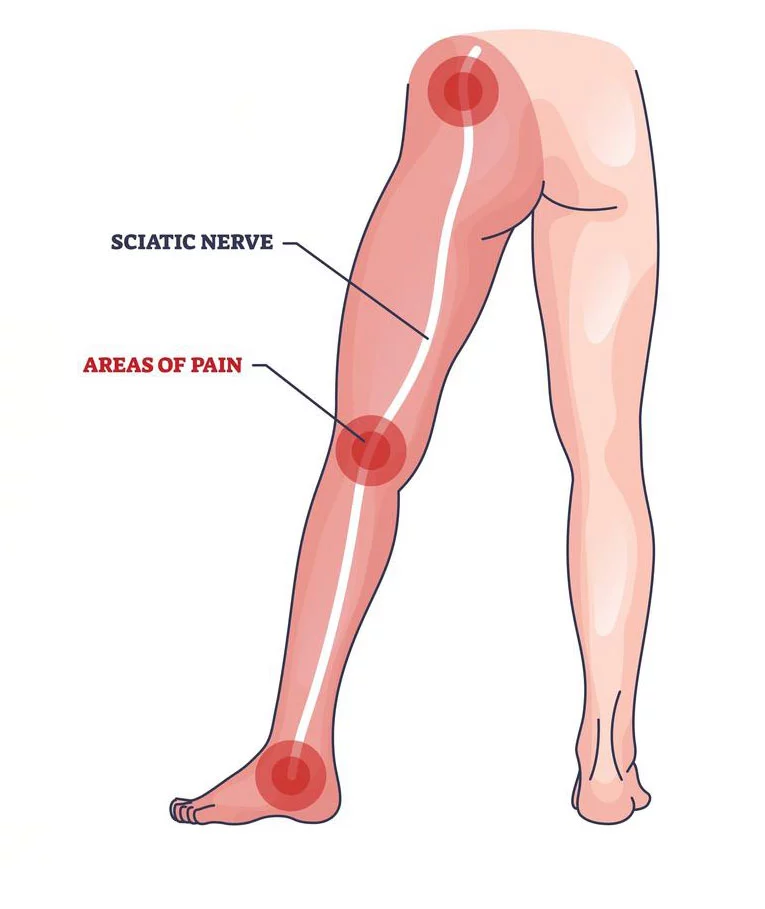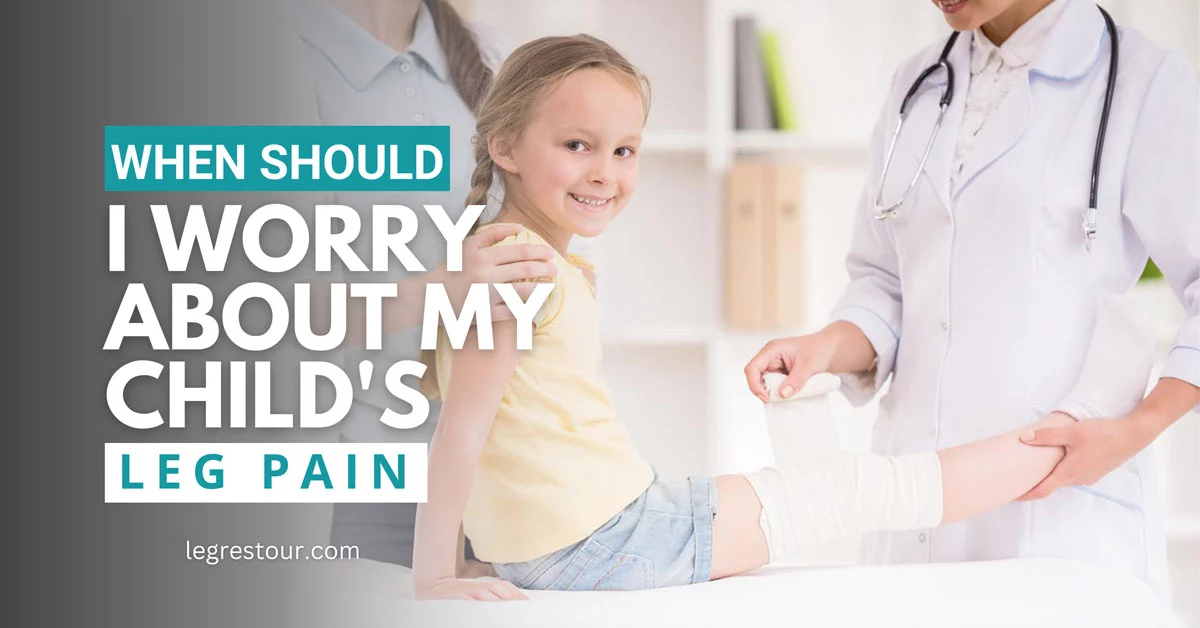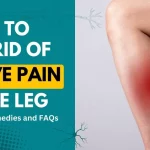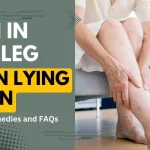Parents frequently worry when their children complain of leg pain, so it’s critical to identify it and take immediate action. Parenting can be made easier by distinguishing between little discomfort and potentially dangerous conditions. This article offers a thorough overview of recognizing the many causes of leg discomfort in kids and how to proceed, and when should I worry about my child’s leg pain?
Normal Development and Growth
As children grow and develop, their legs go through tremendous changes. Knowing these growth patterns might help differentiate between typical discomfort and potential issues. Growing pains, or age-related leg pain, may occur in kids as they go through growth spurts. These pains are generally felt in the calves or muscles surrounding the knees in the late afternoon or evening. They are seen as a natural growth aspect and frequently resolve themselves independently.
Recognizing Leg Pain
Parents must distinguish between mild discomfort and severe pain to know when to take their children to the doctor. While growing pains are typically not harmful, some symptoms could point to a more significant underlying problem. These include any discomfort accompanied by a fever or other systemic symptoms, limping, swelling, redness, warmth or persistent pain that interferes with everyday activities. If these symptoms are present, speaking with a healthcare provider is best.
Leg Pain’s Musculoskeletal Causes
Injury from overuse
Due to their active lifestyles, children are more prone to overuse injuries, which can cause leg pain. Repetitive actions that place stress on the muscles, tendons or bones can result in overuse injuries. Running, jumping, dancing, gymnastics, and competitive sports are common hobbies or sports that can result in overuse injuries. By making sure their children take regular breaks, use appropriate forms while exercising and engage in cross-training to reduce repetitive strain, parents can help prevent such injuries.
Sprains and Strains of the Muscle
Muscle strains and sprains frequently bring on children’s leg pain. These injuries frequently come from quick movements, excessive force or incorrect stretching. Inadequate warm-up regimens, abrupt changes in physical activity or poor conditioning are all causes of muscle injury. Diagnostic treatments like physical exams and imaging testing may be required to validate the degree of Injury. RICE, physical therapy and, in more serious circumstances, immobilization or surgery are some treatment options for muscular strains and sprains.
Damage to the growth plate
Growth plates are near the ends of a child’s bones, areas of developing tissue. Because of how they are still developing, they are susceptible to damage. Accidental or traumatic growth plate injuries frequently result in excruciating leg discomfort. Imaging tests like X-rays or magnetic resonance imaging (MRI) may be necessary to detect growth plate damage in youngsters. Depending on the degree of Injury, treatment options may include physical therapy, immobilization or, in some situations, surgery. It is significant to remember that prompt treatment is necessary to avoid damaging impacts on development and growth in the long run.
Stress fractures
Stress fractures are minute breaks in the bones brought on by excessive strain or repeated stress. Children are less likely to experience them, although they can still happen, especially in physically active people. Early intervention requires an understanding of the stress fracture signs and symptoms. Some examples are localized discomfort, tenderness, swelling and trouble lifting weight. Stress fracture recovery frequently entails rest, immobilization and a slow return to activity. To avoid recurrence, kids should maintain a balanced attitude to physical activity and ensure they use the appropriate footwear.
Leg Pain’s Systemic Roots

Inflammation and infection
Children’s inflammatory and bacterial illnesses can occasionally cause leg pain. Localized leg discomfort can be brought on by joint infections or cellulitis, a skin infection. Leg discomfort can also be a symptom of juvenile idiopathic arthritis, which causes chronic joint inflammation. Medical interventions are frequently required to treat these disorders, such as antibiotics for infections and anti-inflammatory drugs for inflammation.
Rheumatic diseases and arthritis
Children who have arthritis or similar rheumatic illnesses may experience discomfort and limb pain. The autoimmune disease known as juvenile arthritis, which affects the joints, can cause symptoms like joint stiffness, swelling and discomfort that can travel to the legs. For an early diagnosis and the best possible therapy, it is essential to recognize the symptoms of arthritis in children, such as chronic joint pain or swelling. Medication, physical therapy, and support services like counseling or occupational therapy are all possible forms of treatment for juvenile arthritis.
Disorders of the Bone
Specific bone conditions might cause leg discomfort in children. Leg pain may be severe in cases of osteomyelitis (bone infection), osteochondritis dissecans (joint cartilage issue) or Legg-Calvé-Perthes disease (hip bone disorder). Orthopedic experts, experts in infectious diseases or rheumatologists may all be needed to diagnose and treat certain bone illnesses. Depending on the underlying illness, treatment methods might range from medications for infections to surgical treatments.
Nutritional Inadequacies
Children’s leg pain and leg health can both be affected by nutritional deficits. Leg pain might result from a deficiency in vital minerals like calcium, vitamin D or magnesium, impacting bone health. It is essential to address these inadequacies by making suitable dietary recommendations and lifestyle changes. Leg discomfort brought on by nutritional inadequacies can be reduced by eating a balanced diet rich in these necessary elements.
Receiving Medical Care
Even while minor occurrences of leg discomfort might not require immediate medical attention, it’s crucial to know when to see a doctor. It is best to seek medical help if leg discomfort is severe or chronic, interferes with daily activities or is accompanied by alarming signs like fever, warmth or edema. Parents should be ready to discuss their kid’s symptoms, medical history and any queries about the potential reasons and available treatments when they take their child to the doctor.
Prevention Techniques
A healthy lifestyle and regular exercise are encouraged by several measures that are used to prevent leg pain in youngsters. The following are some recommendations for preventing leg pain: Make sure you get enough rest between strenuous activities.
We are utilizing the right tools and strategies.
We are maintaining a healthy diet.
They are preventing overexertion.
Children should be encouraged to participate in various physical activities of varying difficulty to prevent overuse injuries and improve overall musculoskeletal health.
In Summary, For children to feel well, leg pain must be identified and treated. Parents can discern between typical discomfort and potentially dangerous diseases by understanding the various reasons, such as musculoskeletal problems or systemic conditions. Early intervention, a thorough diagnosis and a proper course of treatment are necessary for children’s leg discomfort to be effectively managed.
I think you also like: Best Mattress for Lower Back and Leg Pain
Answers to Frequently Asked Questions
What causes leg discomfort in kids the most frequently?
Growing pains and overuse injuries frequently bring on leg discomfort in youngsters.
Can a child’s leg pain indicate a dangerous condition?
Although benign disorders are the majority of the time, several potentially dangerous conditions can cause leg discomfort in youngsters. Finding the root reason can be assisted by seeking advice from a healthcare practitioner.
Is it typical for my child to go through growing pains regularly?
Growing pains are common yet generally thought to be expected. If the discomfort persists or starts interfering with the child’s everyday activities, more testing may be required.
How long before seeking medical attention should leg pain last?
Regardless of the duration, it is advised to see a doctor if leg pain lasts long, interferes with everyday activities or is accompanied by other alarming symptoms.
Are there any natural ways to treat children’s leg pain?
Mild leg discomfort may be temporarily relieved at home with rest, light stretching, warm compresses and elevation. But if the discomfort continues or worsens, seeing a doctor is crucial.
Can healthy nutrition help youngsters avoid leg pain?
Proper nutrition, including a well-balanced diet rich in important nutrients, can influence leg health. However, reducing leg discomfort necessitates an all-encompassing strategy incorporating appropriate rest, exercise and measures to avoid injuries.
If my child has pain in their legs, should they stop exercising?
It is best to speak with a medical expert to identify the precise source of your leg discomfort and get the right advice. Certain activities must be altered or stopped in specific situations to promote appropriate healing.
What inquiries should I make of the doctor while I’m seeking treatment for my kid’s leg pain?
What might be causing my child’s leg pain, for example, are some questions to consider.
Are there any particular assessments or tests that must be completed?
What treatments are available, and what are the possible advantages and disadvantages?
Should my child make any alterations or changes to their way of life?
Can mental stress cause leg discomfort in children?
Leg discomfort is one physical symptom that emotional stress can sometimes contribute to. However, it is crucial to rule out other possible causes and speak with a medical expert for an accurate assessment.
What long-term repercussions might children’s untreated leg discomfort have?
Depending on the underlying reason, children’s leg discomfort that goes untreated might have various long-term implications. It can occasionally result in discomfort, restricted mobility or impeded growth and development. It is possible to lessen any long-term effects by receiving the proper medical care and treatment.



